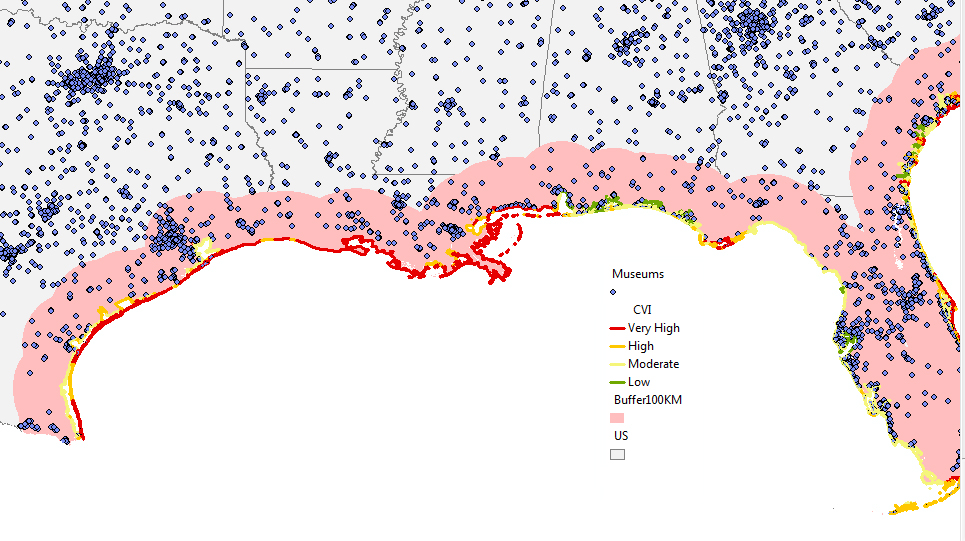
Did you know that over a third (34.6 percent) of US museums sit are within 100 kilometers of the coast? A quarter of those are in areas that score very high on the Coastal Vulnerability Index, meaning they face high risk from rising sea levels and increasingly severe storms.
That’s why this article making The Case for Strategic and Managed Climate Retreat caught my attention.
The authors contend that “the question is no longer if retreat will occur but how, where, and why,” and argue a strategically managed retreat will be more socially just, and ecologically sound, than ad hoc abandonment in the wake of accumulated damage.
Their list of reasons for why retreat is hard to do (and harder to do well) echo the conversations I’ve had with museum people:
- short-term economic gains of coastal development (new museums are often built in existing tourist meccas along the coast)
- subsidized insurance rates and disaster recovery costs
- misaligned incentives between residents, local officials, and national governments (to which I would add boards of trustees and philanthropic funders)
- imperfect risk perceptions
- place attachment
- preference for the status quo
Coastal museums that are confronting the rising risk of storms and tides most often doing so by armoring their infrastructure or working to improve local infrastructure (For a number of examples of museums doing good work along these lines, see the Rising Tides chapter of TrendsWatch 2015.) But the big issues museums confront go beyond ensuring that the roof doesn’t leak and power backups are in place for the next storm.
For one thing, museums play a role in helping their communities build a secure and equitable future. As the paper points out, ad hoc retreat is likely to be highly inequitable. As was dramatized by Hurricane Katrina, residents with fewer resources have fewer options to securely shelter in place or to evacuate. They may be permanently displaced because they can’t afford to return and rebuild. “Conversely,” the authors observe, “they may be unable to afford to move and may end up financially trapped in hazardous places.”
For another, in the near future some museums will include in their constituencies populations that have been displaced from their own nations by rising tides. Case in point: a third of the residents of the Marshall Islands have already relocated to the US, primarily Oregon, Washington and Arkansas. How will their new communities support these “permanent non-immigrants?” How will they change the stories and culture of their new homes? Museums have a significant role to play in managed retreat on a global scale as well.
You can study projections on how rising tides and severe storms will affect your community with Surging Seas Risk Finder interactive and read up on climate displacement more generally at the Migration Data Portal. Next time your museum revisits its strategic plan, you may want to bring some facts from these sites to the planning table.








